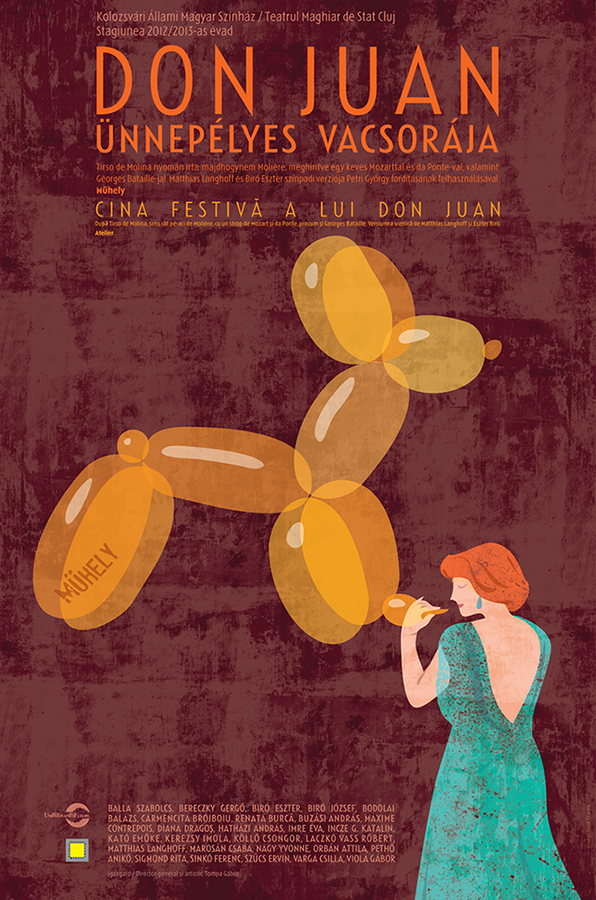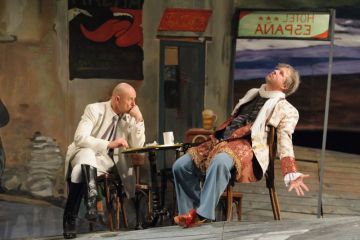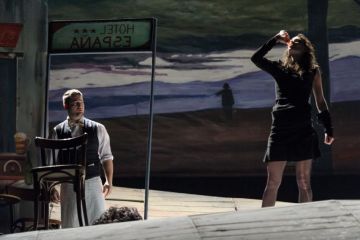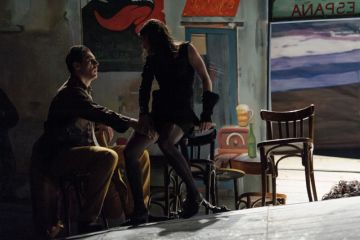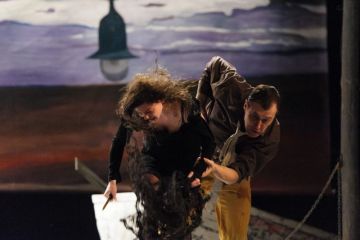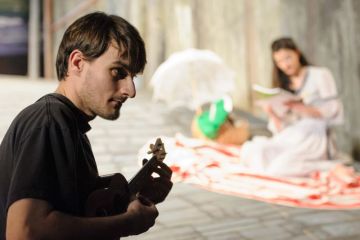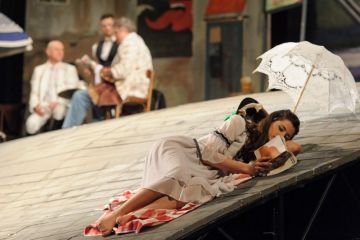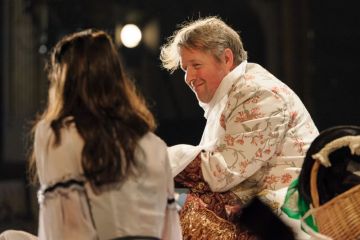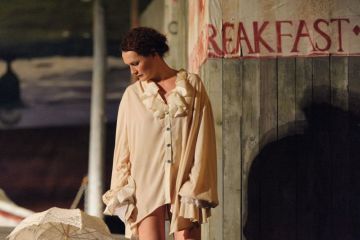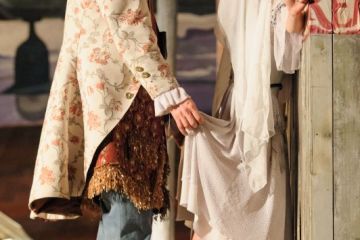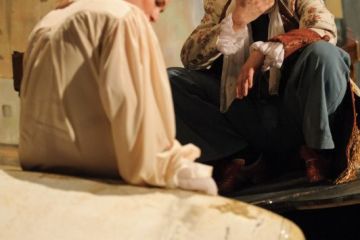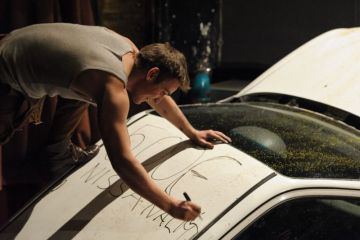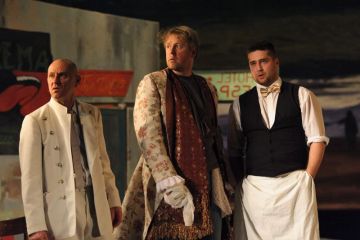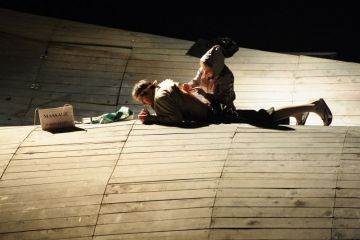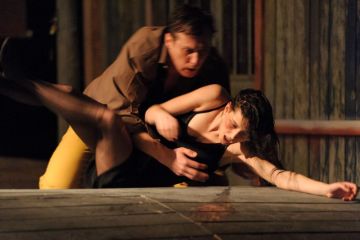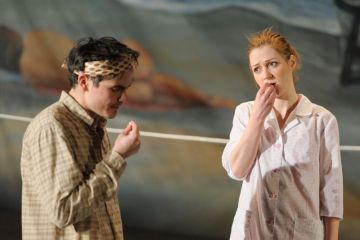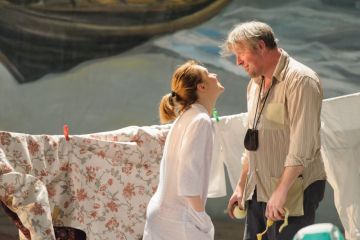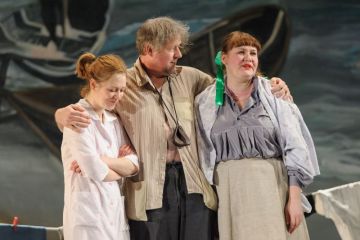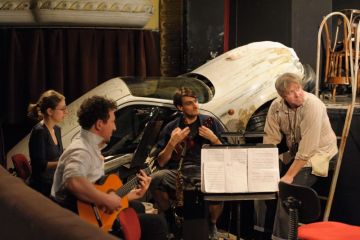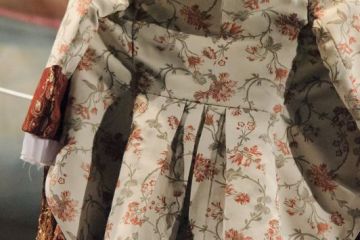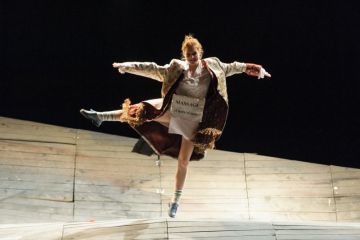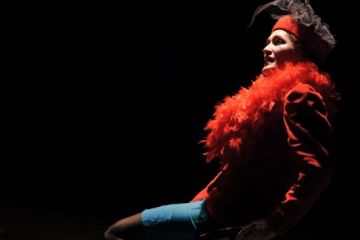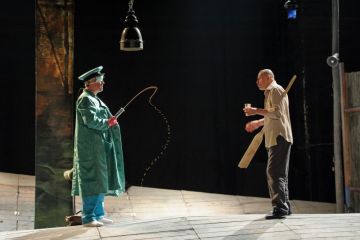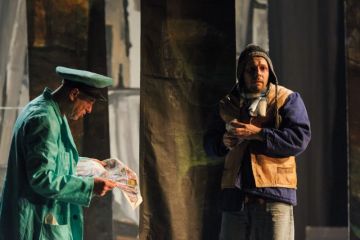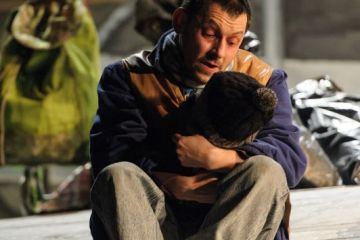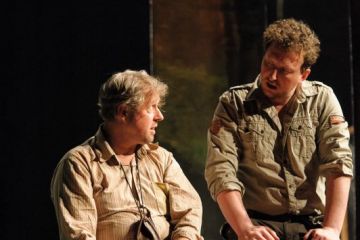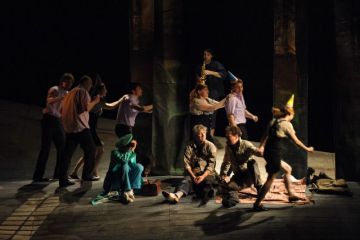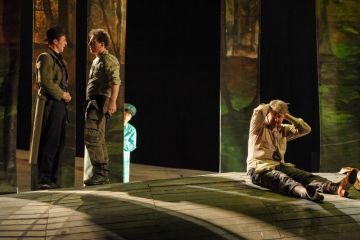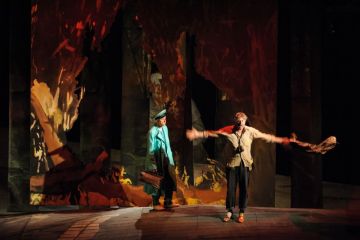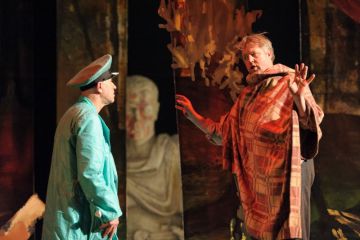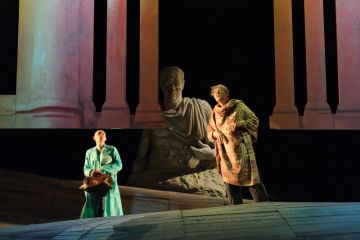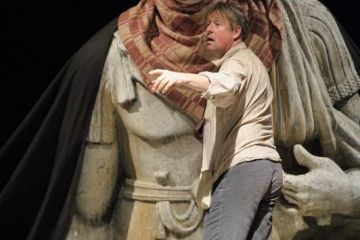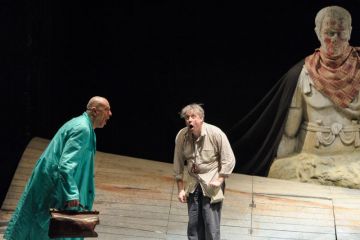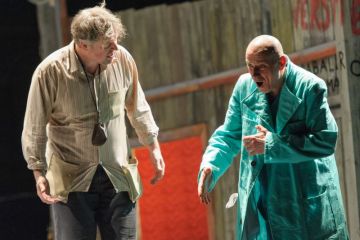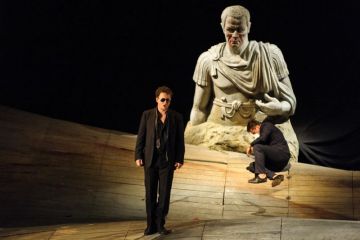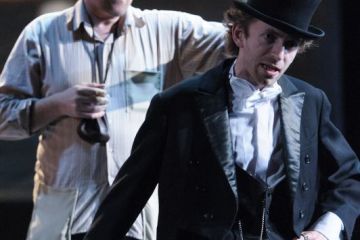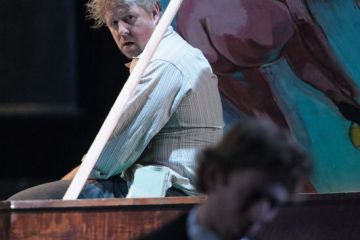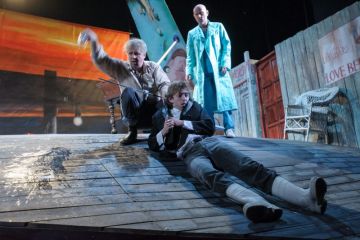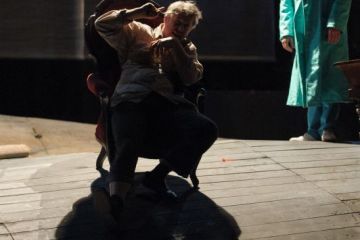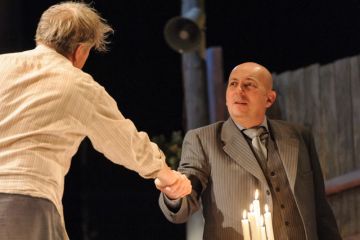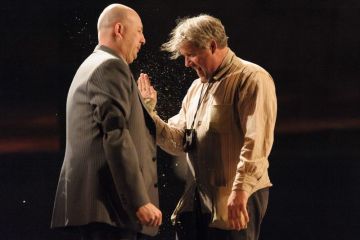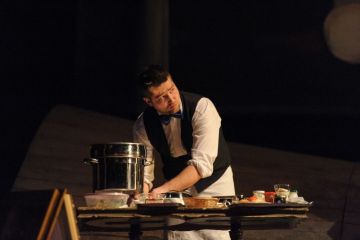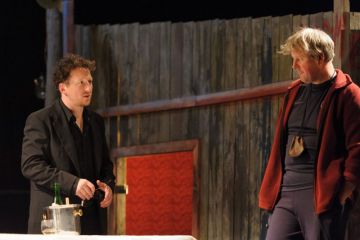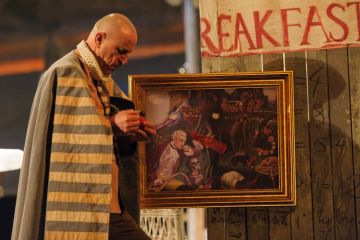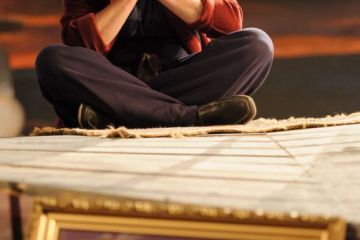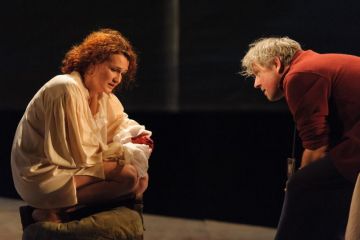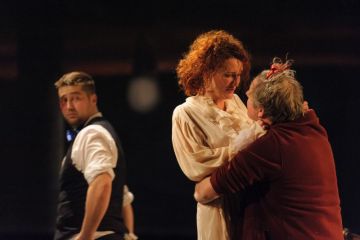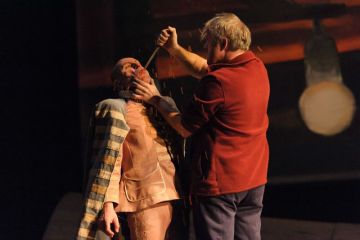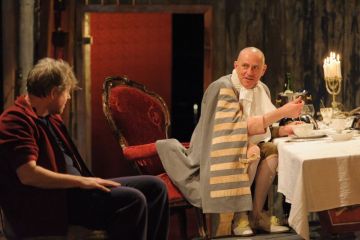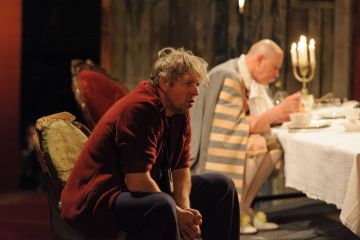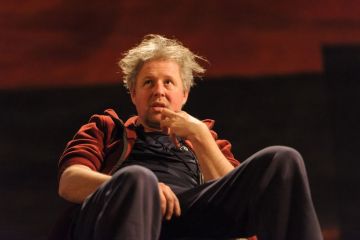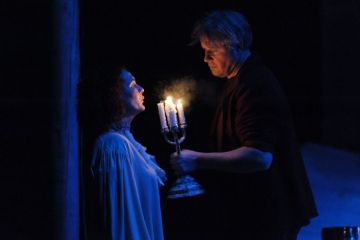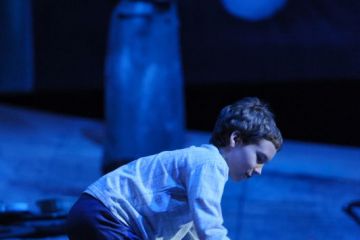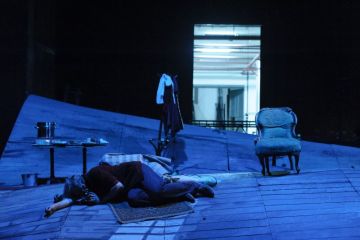The Festive Dinner of Don Juan
Main stage
Don Juan, Don Louis' son
András Hatházi
Sganarelle, Don Juan's servant
József Bíró
Señora Elvira, Don Juan's wife
Emőke Kató
Señor Carlos, ex-fiancé of Señora Elvira
Gábor Viola
Señor Alonso, Señora Elvira's brother
Ervin Szűcs
Don Louise, Don Juan's father
Csongor Köllő
Francisque, a poor man
Róbert Laczkó Vass
Charlotte, peasant girl
Anikó Pethő
Dunya, peasant girl
Csilla Varga
Juan, peasant
Balázs Bodolai
Statue of the commander
Gergő Bereczky
Mister Sunday, merchant
Attila Orbán
La Ramine, waiter, mercenary and others
András Buzási
Woman in Veil/Donna Anna, later Spirit / The time
Éva Imre
Tisbea, young woman in transit
Rita Sigmond
Fabio, once car mechanic at Fiat
Csaba Marosán
Wolfband: Szabolcs Balla, Renata Burcă, Gábor Viola, Róbert Laczkó Vass, Rita Sigmond, Csaba Marosán
directed by, set design by
Matthias Langhoff costume design
Carmencita Brojboiu dramaturg
Eszter Biró musical coordinator
Katalin Incze G. director's assistant
Balázs Bodolai , choreography
Ferenc Sinkó stage manager
Yvonne Nagy, Imola Kerezsy assistant
Maxime Contrepois, Diana Dragoş
András Hatházi
József Bíró
Emőke Kató
Gábor Viola
Ervin Szűcs
Csongor Köllő
Róbert Laczkó Vass
Anikó Pethő
Csilla Varga
Balázs Bodolai
Gergő Bereczky
Attila Orbán
András Buzási
Éva Imre
Rita Sigmond
Csaba Marosán
Wolfband: Szabolcs Balla, Renata Burcă, Gábor Viola, Róbert Laczkó Vass, Rita Sigmond, Csaba Marosán
directed by, set design by
Matthias Langhoff
Carmencita Brojboiu
Eszter Biró
Katalin Incze G.
Balázs Bodolai ,
Ferenc Sinkó
Yvonne Nagy, Imola Kerezsy
Maxime Contrepois, Diana Dragoş
Date of the opening: march 06, 2013
Date of opening: 6 March 2013 Duration: 4 hours 20 minutes with one intermission
Recommended for ages 14+
Owner of the stage rights for Histoire de l’Oeil (Story of the Eye) by Georges Bataille:
© Pauvert, 1967, 1976, department of Editions Fayard
After Tirso de Molina, written by almost Molière, with a little Mozart, da Ponte and Georges Bataille
Scenic version by Matthias Langhoff and Eszter Biró
Music: Katalin Incze G.
Workshop
AN OLD STORY
1.
Once, in a forgotten book in my library, I read about a girl who, while walking one shining summer day in Sevilla, discovered a church that supposedly was founded by the famous womanizer, Don Juan. On a brass plate, the girl read that it was Don Juan’s wish to be buried beneath the gate of the church. The penitent sinner wanted to be trampled upon even by the lowliest. The girl broke into such laughter that she could not, or did not want to, retain her urine. It trickled down both her legs, and a stream gushed on to the tombstone.
A few years later, I tried to find this church in Sevilla. Nobody could help me. Nobody knew about the grave or the church.
Finally, I found the grave and the urine drenched tombstone. But it was not in a church, nor in a cemetery, either. I found it near a building site or dump, 3464 km east of Sevilla. I bent down and wiped the centuries-old dirt from the weathered brass plate, and this is what I read there: “I did not want you to believe me. I wanted you to have no hopes about me. I did not want to be good. I wanted you to hate me, to laugh at me and despise me. But if I leave, you’ll realize just how much you miss me. Pay my servant.”
I left the place – the building site or the dump – uncomprehendingly. A fly that had inexplicably survived the frosty winter settled on my green patinaed hand.
!!! Go to the theatre before it’s too late. !!!
2.
On my way home at the end of the workday, I was leaving the rehearsal room, and between the bathroom and the staircase I noticed a cleaning woman watching me. She was grey, like most cleaning ladies, about my age, and she was smiling at me in a polite and friendly way.
I stumbled and she said, in German, with a slight accent: "Vorsicht" and "Guten Tag." then "Ach ja". I was reminded of Herta Müller. I recommend my work to her, to the cleaning lady.
Mattias Langhoff









